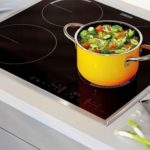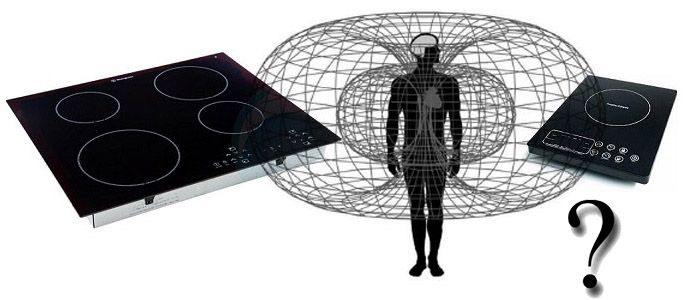Types of hobs
 The hob is an important attribute of modern kitchens. Buyers have long understood the convenience of such panels. They are not connected to the oven, which allows you to place both units conveniently for the housewife. In addition, you can purchase a small narrow surface, thus freeing up space on the countertop.
The hob is an important attribute of modern kitchens. Buyers have long understood the convenience of such panels. They are not connected to the oven, which allows you to place both units conveniently for the housewife. In addition, you can purchase a small narrow surface, thus freeing up space on the countertop.
Manufacturers offer various types of hobs. Let's figure out what is unique about each type.
The content of the article
Types and features of hobs
Gas devices
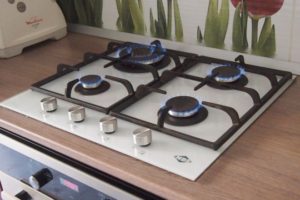
The cooking module of this technique looks like metal circles of different diameters that have perforations to mix gas with air.
Above these elements is either a grille or tempered glass. Burner circles act as a heating device; a lattice or glass forms the surface on which the dishes are placed.
- The advantages of this type of stove are its efficiency and good control over temperature changes.
- The main disadvantage is the dangers associated with using open gas in everyday life: the possibility of poisoning or fire.
Important! If you choose a gas hob, pay attention to the presence of a gas control system.
When a malfunction occurs in the operation of the device, it automatically blocks the flow of flammable substances. Consequently, the presence of such a system significantly reduces the potential danger of a gas furnace.
Powered by electricity
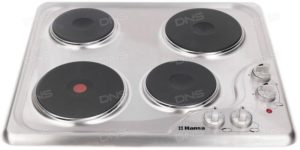
Structurally, the hob in this case is made of metal shades that are heated using electricity. Such shadows are hidden under a metal or glass-ceramic surface.
First, let's look at a more traditional option - cast iron. It looks like round burners of different diameters, on which pots and pans are placed during the cooking process.
- The advantage of such kitchen appliances is its relatively low cost.
- The disadvantage is the large heat losses associated with the slow heating and cooling of this type of burner.
With glass ceramic coating
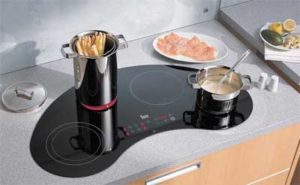
Let's move on to the modern variety of electric stoves, which have a glass-ceramic coating on top. Although they are more expensive, they use electricity more efficiently and are therefore considered more economical. They heat up and cool down quickly. The main disadvantage is the vulnerability of the hob to mechanical damage.
Important! According to service centers involved in the repair of glass-ceramic appliances, the most common breakdown for this type of stove is cracks in the hob.
Electric stoves are a safer, but also more expensive option.
Combined options
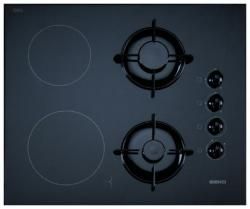
There are kitchen appliances that have a mixed operating principle: both gas and electricity.
In this case, the hob is a combination of several gas burners and several electric ones.
Such a complex device provides several advantages.
- Firstly, it is indispensable in regions with interruptions in gas and/or electricity supplies. When one of the energy sources is not available, you can cook food using the second.
- Secondly, such a cooking surface expands the capabilities of the cook: gas burners allow you to instantly remove the supply of thermal energy, avoiding burning. And with the help of electric ones, you can let the dish “simmer” after turning it off, gradually reducing the impact.
Combined hobs combine the advantages of different types of appliances, but also disadvantages. Relatively high cost, dangers associated with the use of gas - it is worth keeping in mind such aspects of their use.
Induction
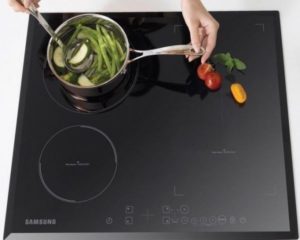
Induction panels are a type of electric panel. However, they have a number of specific features, because of which it makes sense to consider this type of kitchen equipment separately.
Structurally, the cooking surface of such a stove consists of an induction current transformer hidden under a glass-ceramic panel. It produces an electromagnetic field, which heats the dishes placed on the burner with food inside.
Thus, the induction device does not heat the cooking surface, but the food along with the container in which it is located. This circumstance gives the device important qualities.
- Reducing heat loss to a minimum.
- Reducing the load on the glass-ceramic panel.
- Higher efficiency of the device. For the induction model, it is 30% higher compared to more traditional surfaces.
The disadvantages of this type of equipment include its relatively high cost.
Many factors can influence the decision of which hob to choose. This includes price, the presence or absence of gas in your home, and culinary habits.
However, a glass-ceramic stove, despite a number of its inherent disadvantages, is a more modern and energy-efficient option. Especially if we talk about induction options, it should be noted that they are more durable due to a different operating principle.
Additional functions of the hob
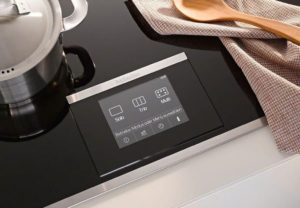
Modern models can have many interesting additional features.
For example, special modes for cooking: “keep warm”, “auto boil”.
There are options aimed at ensuring security. These include a sensor that recognizes whether there are dishes on the stove and turns off the heat supply if there are none. Some devices have a protective shutdown of the stove if no commands are received for a long period of time.
The number of additional features continues to grow; Each subsequent model can please you with something new.
Now you know what types of cooking equipment there are. Taking into account your needs, you can choose from a wide variety of panels that will make your stay in the kitchen even more enjoyable.


